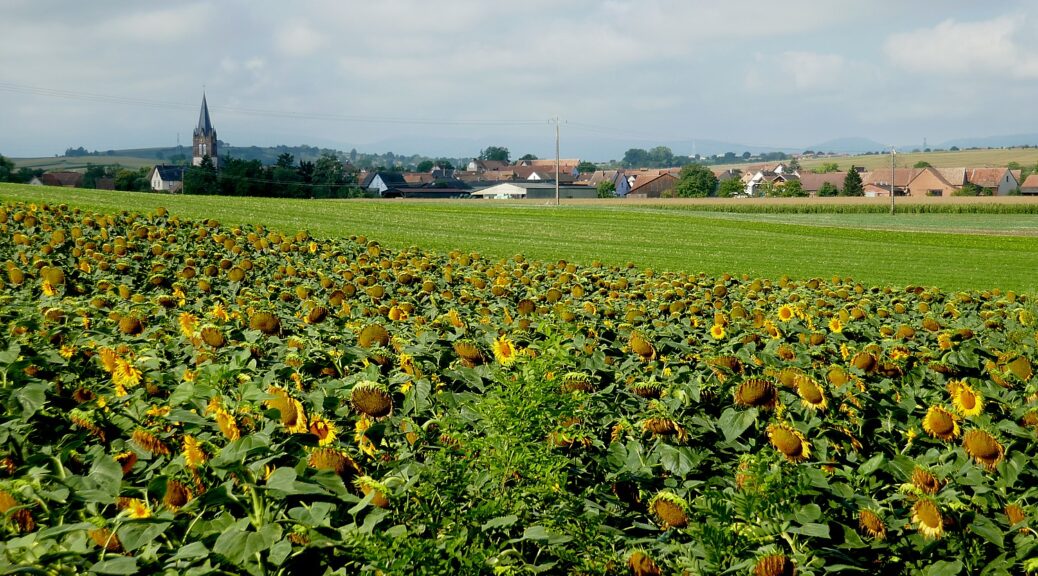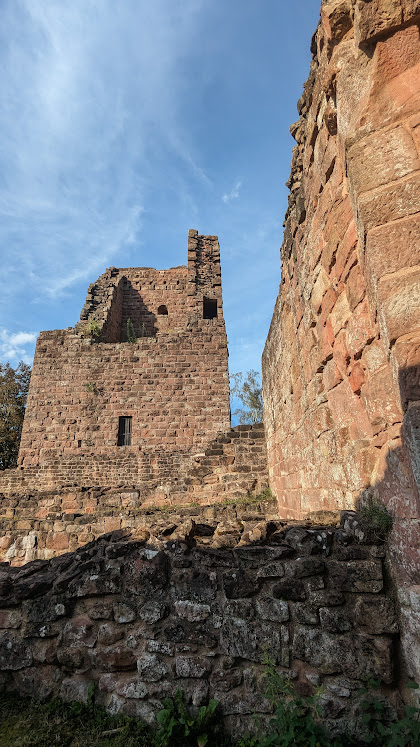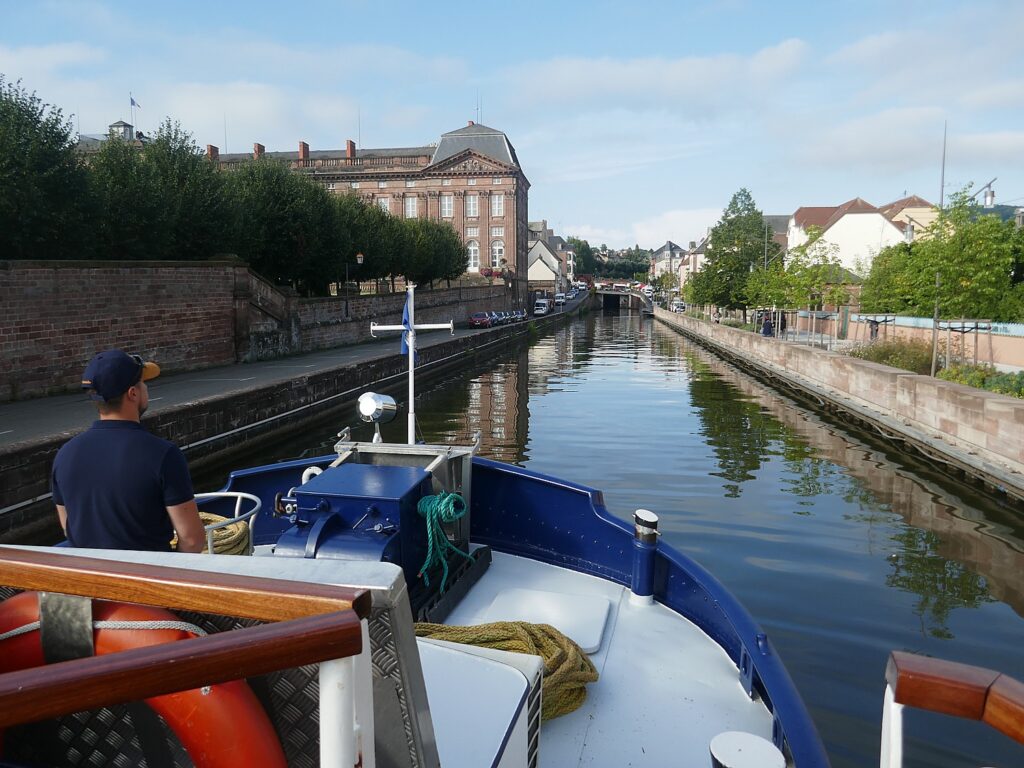
By Karen Rubin, Travel Features Syndicate, goingplacesfarandnear.com
Day 4 Waltenheim-sur-Zorn to Saverne
On this fourth day of European Waterways’ seven-day cruise cruise on the Marne au Rhin canal through France’s Alsace-Lorraine, the luxury hotel barge Panache cruises to the enchanting town of Saverne, boasting a history that dates back 2,000 years to Gallo-Roman times. We will tie up right in the town at the foot of the Château de Rohan, a palace built for a Cardinal that is so grand, it is known as the “Versailles of Alsace.”
Sue, who hails from Australia, and I are up early enough to go with Captain Brian into the village of Waltenheim-sur-Zorn to the most remarkable patisserie I have ever seen to pick up breads and other delights for our breakfast. The boat departs at 8 am on the dot (I had just stepped off for a photo and got back just in the nick).
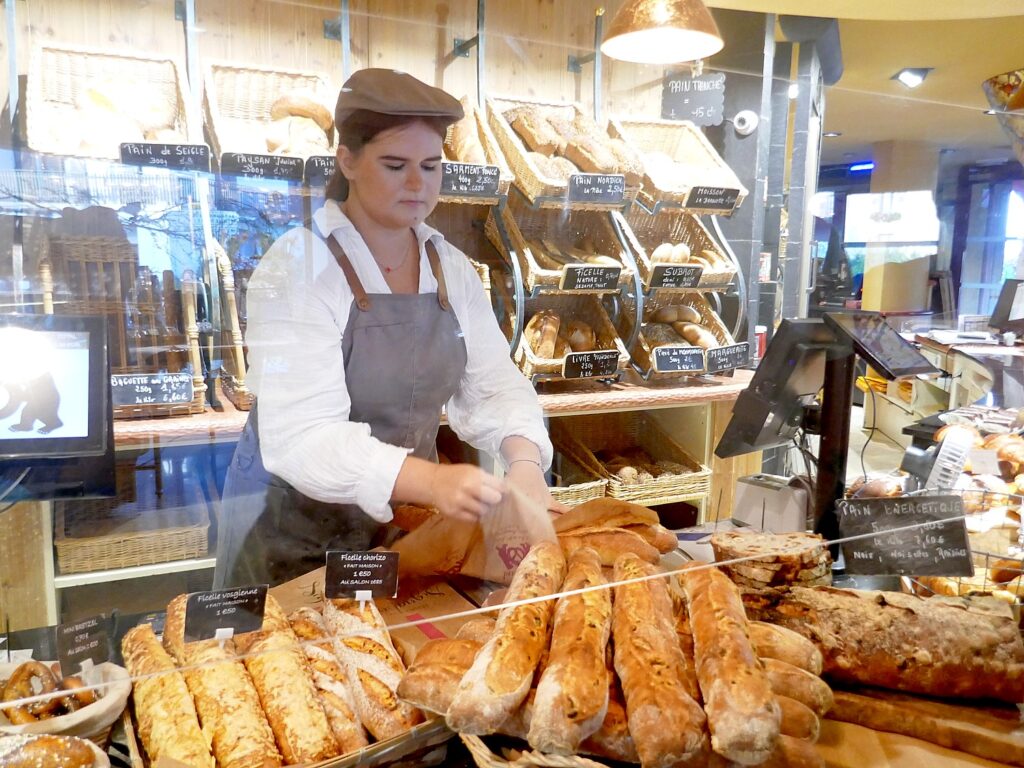
Captain Brian tells me that I can bike up to lock 32 and the boat should be there around 2 pm. I do my calculation: Locks 42-41 are 4 km apart; locks 37-36 are 4 km (we will be there around lunchtime) while it will take the boat four hours to get to 37.
The biking on the towpath alongside the canal takes me passed some of the prettiest pastoral scenes on the route (especially between locks 39 to 37, from Lupstein to Dettwiller). It’s classic.
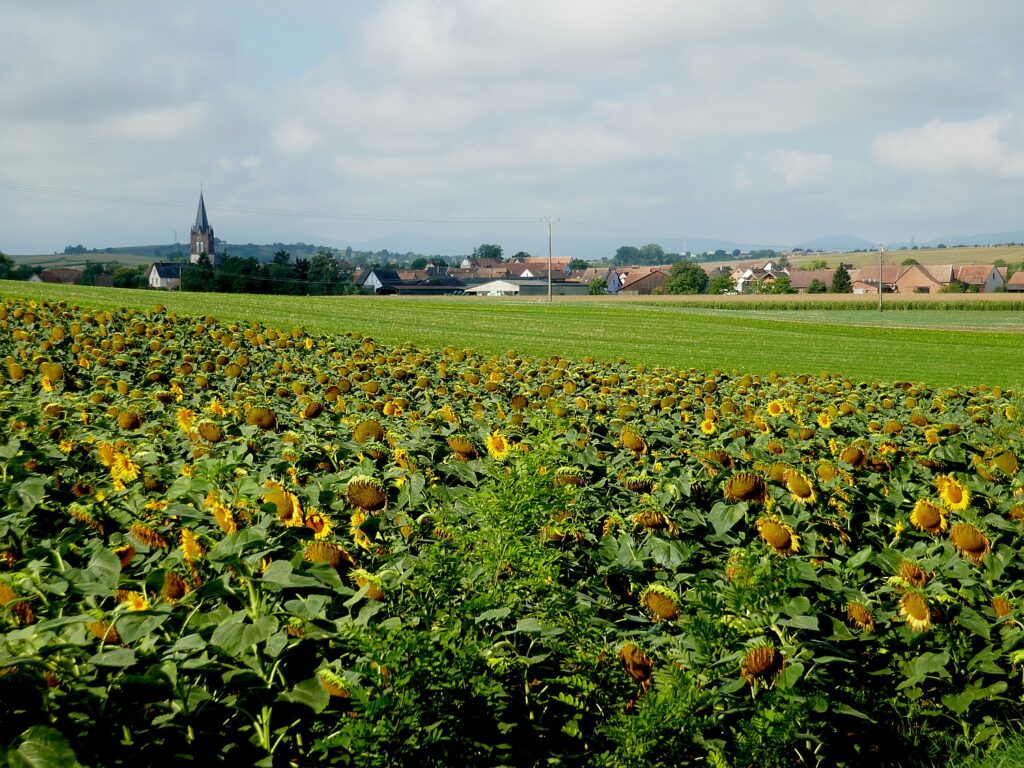
I think I get in 20 miles riding all the way to Saverne and doubling back to lock 36 to get back on the boat for lunch
Lunch features French beans with aioli; crayfish with risotto – superb. The white wine is Sancerre La Ferriere 2021 (coincidentally, the book I am reading that day mentioned the same wine!) and the red wine-Sancerre La Louisonne (2016), a Pinot Noir from the Loire Valley.
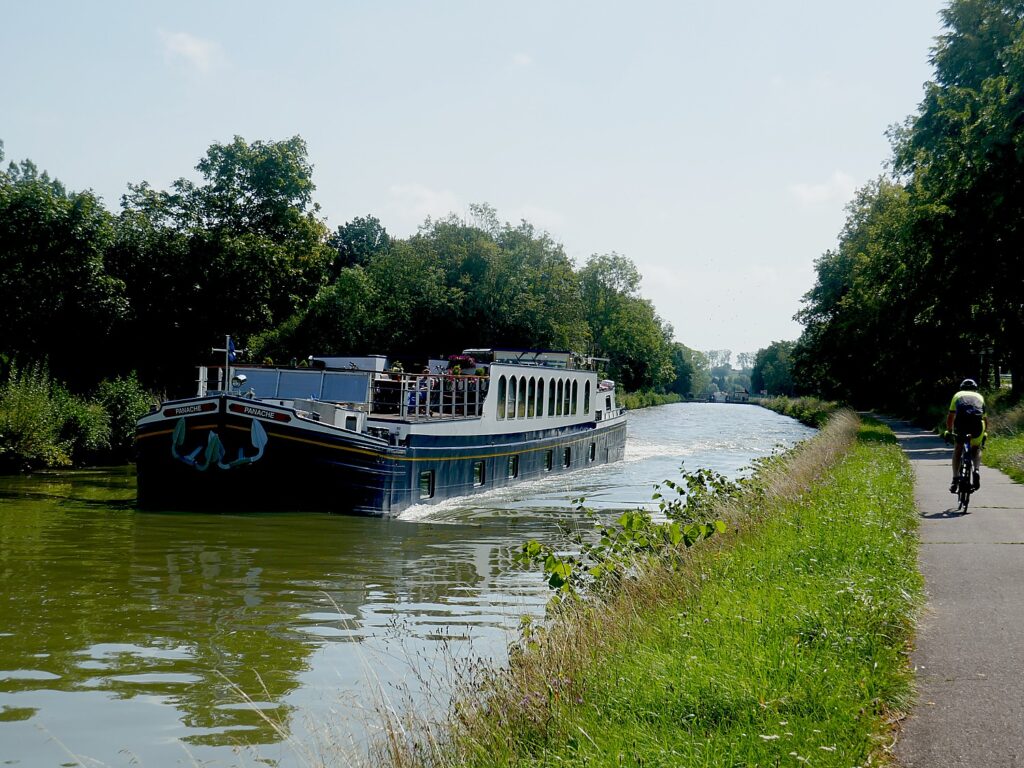
We continue our onboard discovery of French cheeses with Mimolette (also known as Boule de Lille), a cow’s milk cheese produced in Flanders and Normandy, has a marvelous story: a French version of Edam, it has a distinctive orange color that was developed for King XIV in the 18th C. A further study reveals that it was developed “on the advice of his finance minister Jean-Baptiste Colbert, that the way forward for the French economy was to export as much as possible and import as little as possible. France was pretty much bankrupt at the time and this strategy was aimed at balancing the budget. Colbert was also a big fan of taxes and micro-management.” (https://brieencounter.wordpress.com/2012/08/31/todays-cheese-is-mimolette/). We also experience Brillat-Savarin, a soft-ripened triple cream cow’s milk cheese with a natural, bloomy rind.

At 3:30 pm, Captain Brian takes us on a delightful walking tour of Saverne, pointing out exquisite architecture – and here, I really appreciate the difference between wandering around and having someone who can point out the interesting details.
Saverne became really important for its geographical location – set where two major Roman roads converge, where you can access the Rhine and Rhone to go to the Netherlands, or where it joins the Seine to go to southern France. Not surprisingly, Saverne’s authority changed between France and Germany several times in history, and its cultural imprint – architecture, food, language – reflect both.
We come to a statue of the city’s emblem, the Unicorn, just in front of the Chateau Rohan,
Here, Brian attempts to relay in abbreviated form the “Mystery of Necklace,” This was a colossal scandal involving “the most expensive necklace of the Middle Ages, most beautiful, with the biggest diamonds in the world” that in today’s money would have been worth $15 million, helped bring down Marie Antoinette for her perceived excess and lead, ultimately, to her execution in the French Revolution. (I subsequently learn, she actually refused the necklace, because she said her country needed ships the money would buy.) But the connection to Saverne is this Chateau de Rohan, because at the heart of the scandal was Cardinal de Rohan who built the opulent palace. The mystery comes because the necklace was stolen and never found. (The events are even more dramatic than Alexandre Dumas’ “Three Musketeers”, https://en.wikipedia.org/wiki/Affair_of_the_Diamond_Necklace)
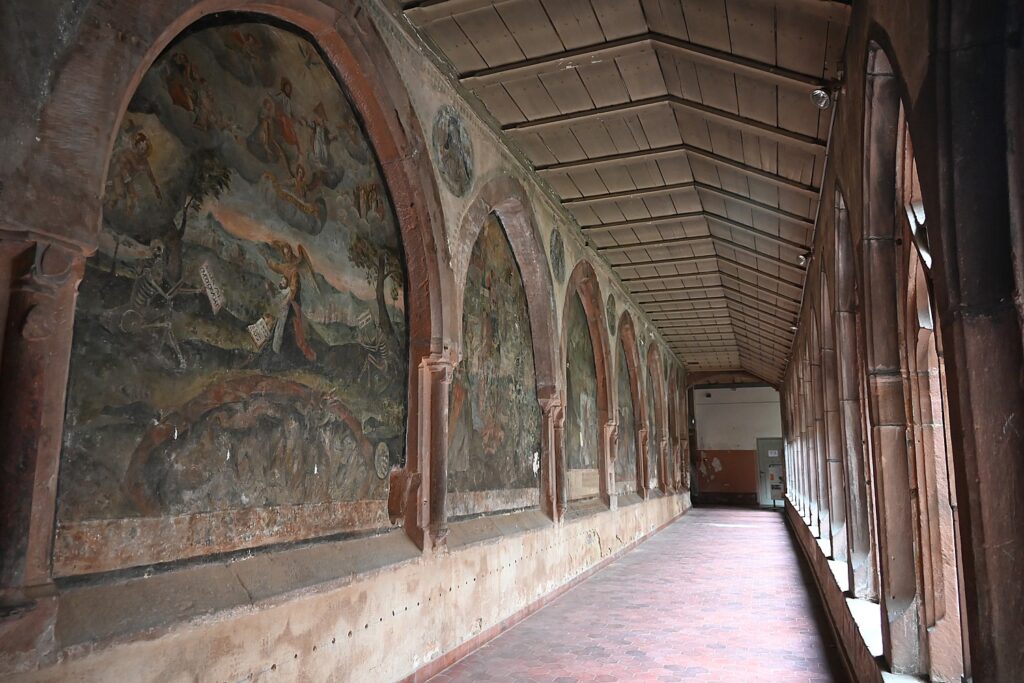
We walk to a 14th century cloister, a stunning example of Gothic architecture with a garden where medicinal herbs were cultivated; it is ringed by a portico and impressive 17th century frescoes which tell of a trial.
We walk to the Hotel de Ville – the city hall – a stunning historic building that manifests the city’s mix of culture: a Germanic balcony and a French balcony.
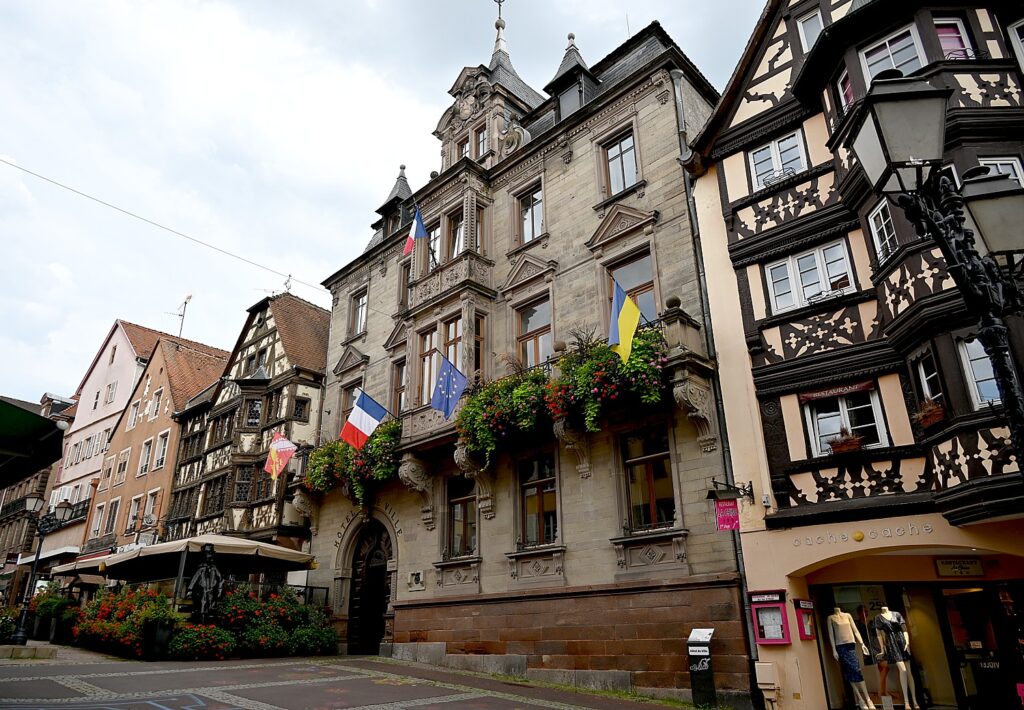
It is adjacent to the oldest and most ornate building still standing, Maison Katz. Built in 1605 by Henri Katz, the Receiver General of the Bishopric, its beautiful façade of sculpted timber is a superb example of the German Renaissance style. Today, it is a popular restaurant. (Taverne Katz, 80 Grand’Rue 67700 Saverne, +33 (0)3 88 71 16 56, https://www.tavernekatz.com/en/restaurant).
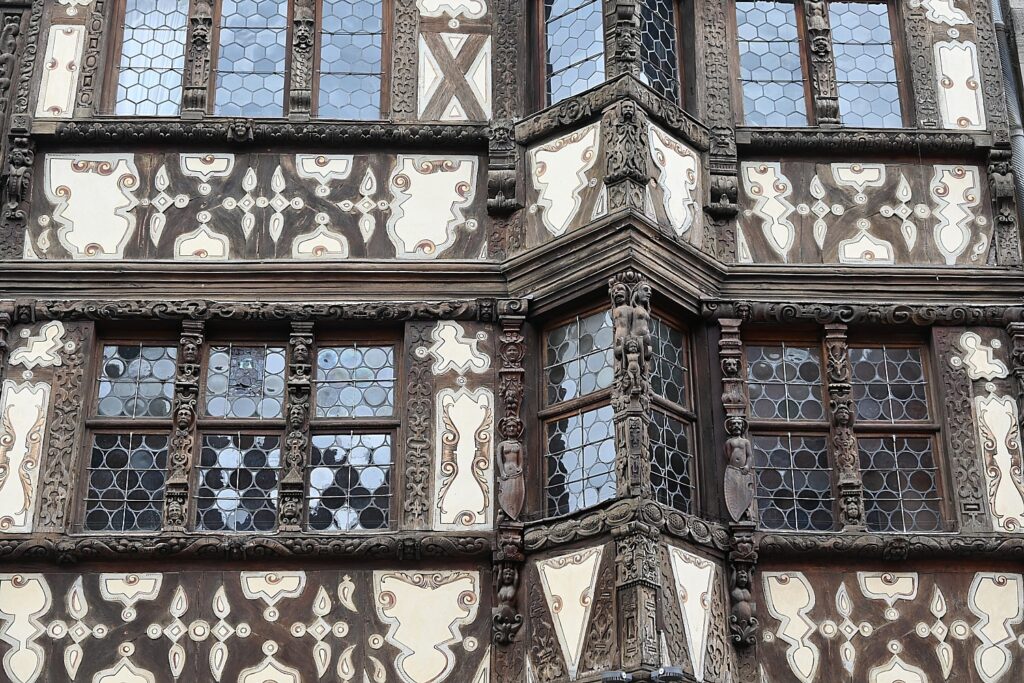
Befitting wealthy property, it is also very close to the Church Notre Dame, built in the 12-15th centuries, with Romanesque arch and a Gothic interior. Remarkably, the Chapel has the original 15th century stained glass; the rest has stained glass from the 19th century.
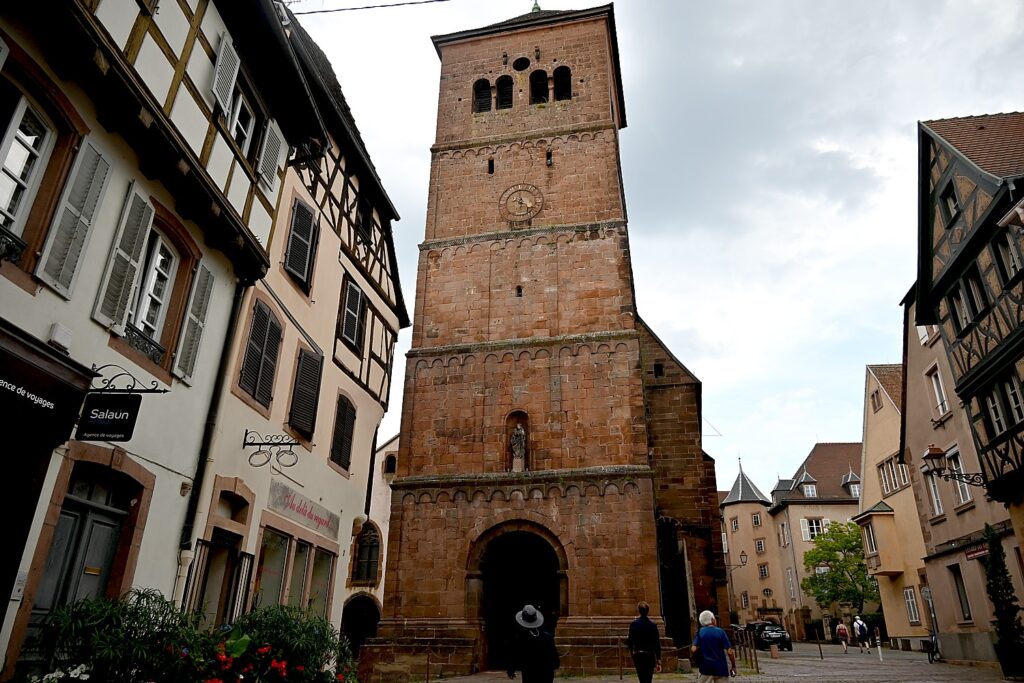
Musée du Château de Rohan
We walk next to the Château de Rohan, overlooking the Marne-Rhine Canal that we have been cruising. Historically the residence of the bishops of Strasbourg, it was rebuilt by Cardinal de Rohan in 1779 in neoclassical style with magnificent gardens and a 140-meter-long façade made of Vosges sandstone (like the Notre-Dame of Strasbourg).

The palace today houses the city museum. Founded in 1858, the museum exhibits art from the churches and castle of Saverne, a large archeological collection of Roman and Celtic artifacts from the excavation of the Marne-Rhine Canal, the collection of 20th century and ethnological art donated by feminist journalist and politician Louise Weiss, and a fascinating exhibit about her life and times.
Weiss trained as a teacher (against her family’s wishes), and throughout World War I worked as a war nurse and founded a hospital; from 1918-1934, she published a magazine, L’Europe nouvelle. In the 1920s, she left France to see the world “to discover true meaning,” spending time in Communist Russia, meeting Lenin and Trotsky. From 1935 to the beginning of World War II she committed herself to women’s suffrage and ran for Parliament in 1936. She was active in the French Resistance during the war and was the chief editor of a secret magazine. After World War II, she said she knew nothing of Asian people, and again set off to travel the world. In 1979 she became a member of the European Parliament. She died in 1983.She said her only regret in life was not being a candidate for president. She reminds me of a French Eleanor Roosevelt. (I learn later there is a statue of Louise Weiss at the fountain in the square.)
I walk back to the boat just before 6 pm, arriving as a trio comes on board, to regale us with French (“C’est si bon”) and gypsy jazz. Fabulous.

The joy from the music carries over into dinner: trout with a tomato crumble; cod with tapioca and black garlic; a scrumptious dessert of strawberry with elderflower (that Chef Leo picked from his own garden that day). Every dish is so imaginative, distinctive, and magnificently presented.
Chef Leo, who typically introduces the main course, explains that the cod is cooked slowly at low temperature, the black garlic sauce made with burnt shallots. It gives a wonderful, unexpected flavor. “I love experimenting with different flavors,” he tells us.

The white wine is Grand Cru Alsatian Reisling, House of August; the red a Grand Vin d’Alsace, Pino Noir (2012).
The cheeses this evening include a creamy, buttery cow’s milk cheese, cousin to Brie; Abondance, a semi-firm cow’s milk cheese from Haute-Savoie, aged for three months on spruce blocks that has a delightful walnut taste; and Bleu de Gex, a creamy, semi-soft blue cheese made from unpasteurized milk in the Jura region).
Day 5 Saverne to Lutzelbourg

Leaving Saverne, we go through the most dramatic and highest lock of all – it must be 30 feet high. I watch this feat, then hop off with the bike to ride the route to Lutzelbourg.
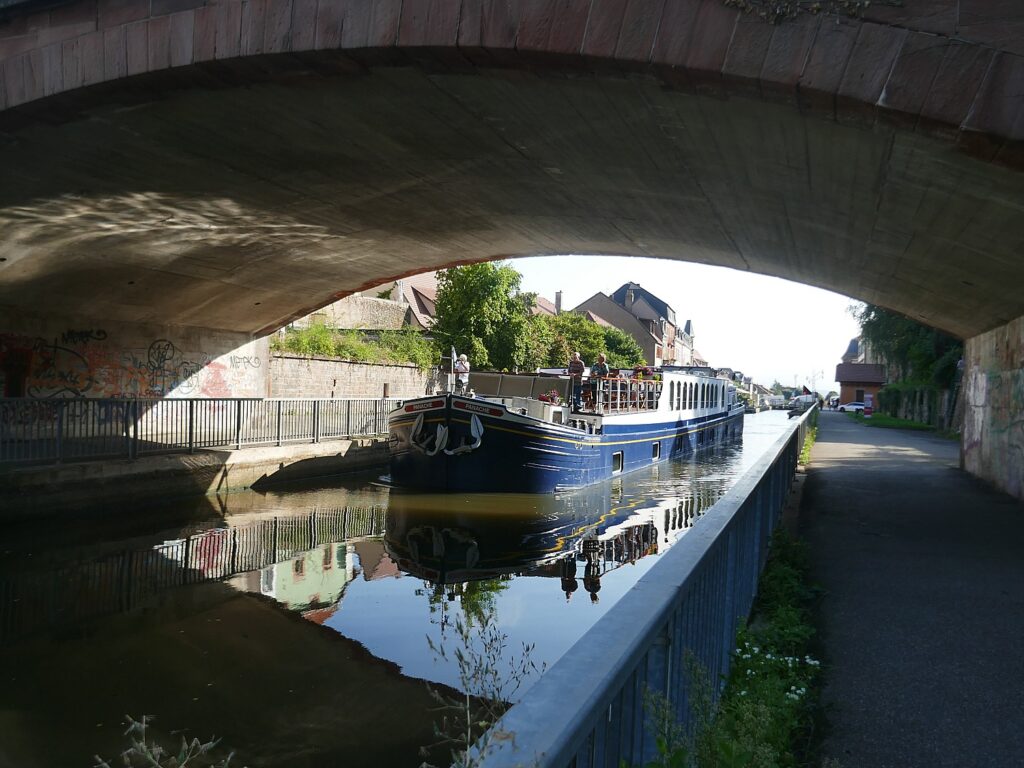
I return to the boat, just in time to see Chef Leo give us a cooking demonstration of the passionfruit crème brulee he is making in response to Sue’s request. It is so much fun to watch his preparation – Captain Brian pitches in, too.
We take note of a (tongue-in-cheek) “firing board” in which Captain Brian keeps tabs on who is in the running to get fired – whoever has the least checkmarks at the end of the quarter gets a prize.
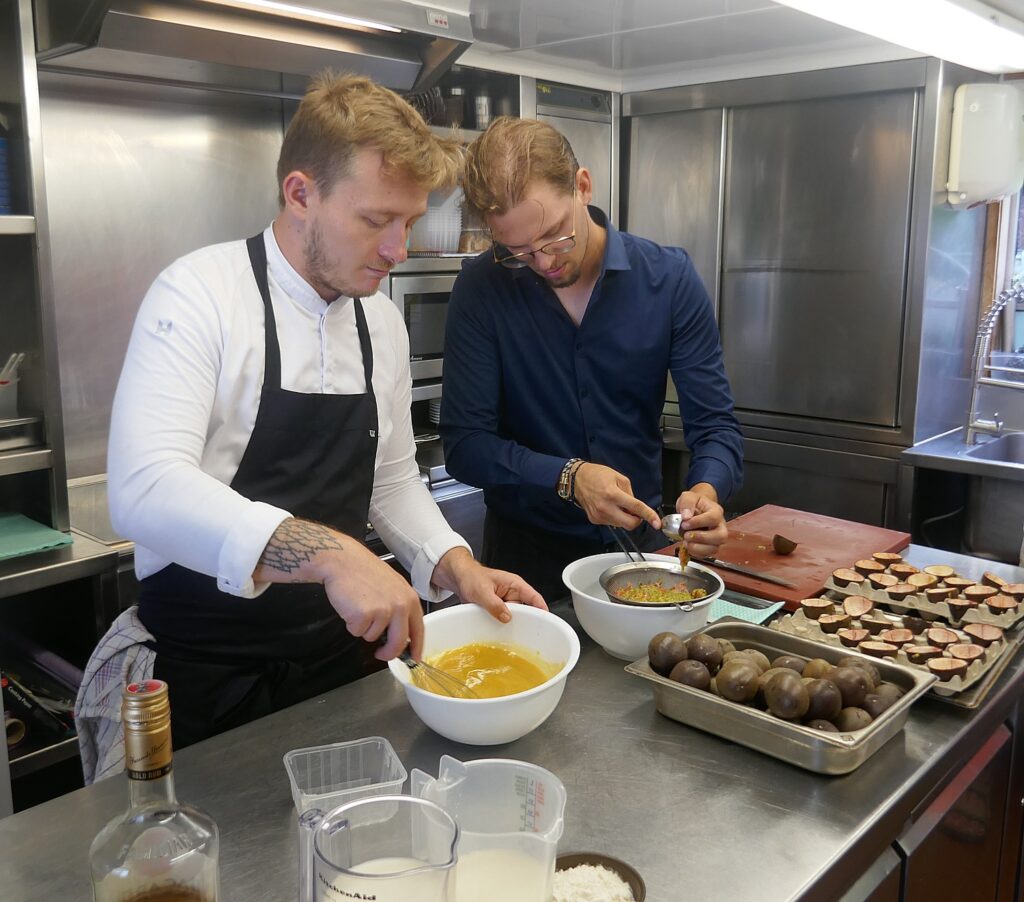
Lunch features asparagus and cream; beef with cheesy mash potatoes (vegetarian option salmon) and the passionfruit crème brulee (parfait!). The wines are an Alsatian Riesling, Lieu Dit Burg, and an Alsace Pinot Noir (2018), Famille Hugel.
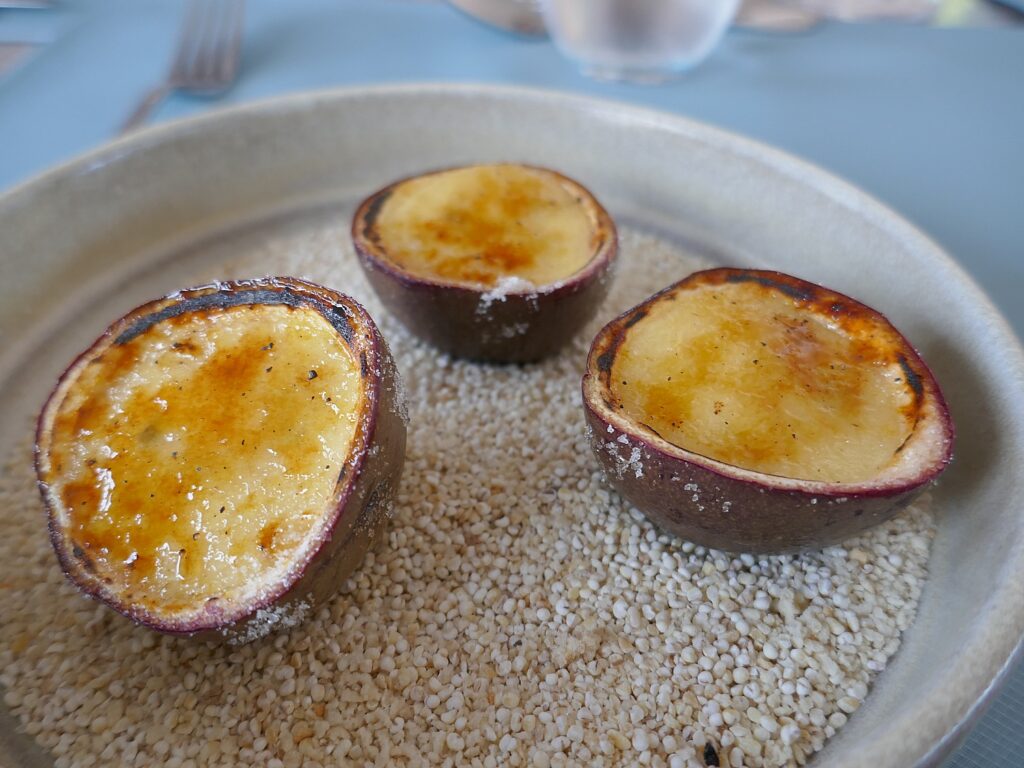
After lunch, we are driven to the Lalique Museum.
Lalique Museum
Situated in the picturesque village of Wingen-sur-Moder, Lalique Museum celebrates the work of the jewelry designer and glassmaker, Rene Lalique.
Lalique founded his workshop here in 1921. Throughout his lifetime, Lalique crafted jewelry, medals, perfume bottles, vases, chandeliers and glass, and we swoon seeing the collection of more than 650 of Lalique’s most stunning creations, which incorporate enamel, precious stones, and glass, gloriously displayed, with fascinating video projections and huge photographs to tell the story of the Lalique dynasty.
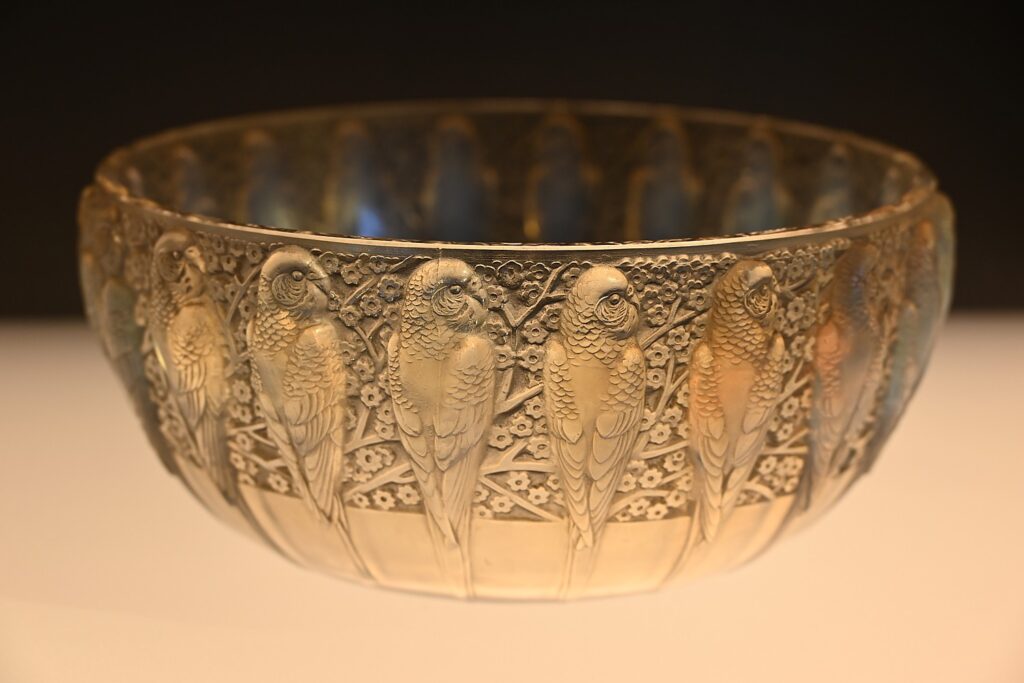
The hallmark of Rene Lalique’s jewelry design was its exquisite precision and tiny detail in the insects, fauna, flowers– you can see the wind fluttering the flower petals, every feather on a bird, a hair comb in the Japanese style has a rising sun.
“All were his ideas, his designs. He designed every piece and could name to whom sold. Renee Lalique was a control freak – he never slept more than 3 hours.”
He was on the forefront of the Art Nouveau movement but was regarded as too modern, too eccentric for Catholic sensibility, she tells us. “Too modern for Cartier. But this became the fashion.”
Rene Lalique drew his inspiration from Egypt, from Japan, from the Middle Ages, but gave these inspirations a totally new expression, his own stamp.
He became famous after winning a gold medal at the 1900 Exposition, a celebration of modernism in which electricity in Paris and the first subway were unveiled, attended by some 50 million visitors.
Rene was as brilliant a businessman as he was an artist, inventor and entrepreneur, pioneering branding, marketing, merchandising techniques. “Every perfumer demanded a new bottle, a special stopper.”
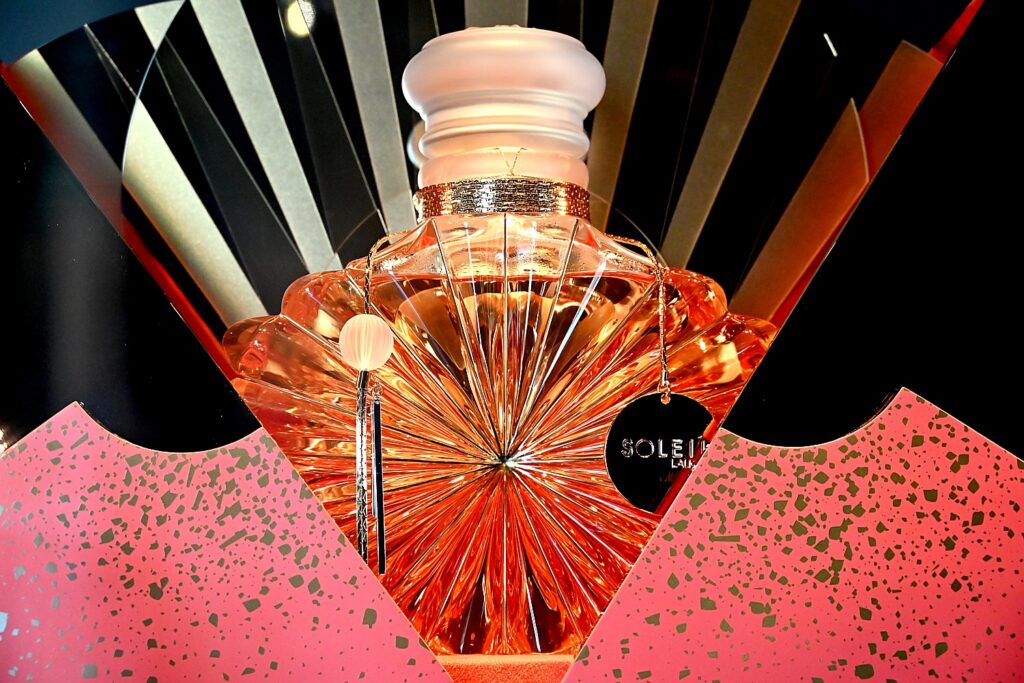
He created a joint advertising/marketing campaign (perhaps the first) with the perfumer, Molinar. “He created demand for the next collection, for perfume, then for toilet water.”
For the 1925 Exposition, he created a17-meter high glass fountain that looked like stone during the day but was lighted at night. “People then didn’t have electricity at home – it was too modern for Paris.” At the exposition’s end, he sold the statues as a limited edition.

We learn how Renee Lalique, who lived from 1860-1945, innovated new techniques and modern mass-production processes. Though Rene knew the process to turn regular glass into crystal (by adding lead), it was his son, Marc, who took over upon his death in 1945, that steered the company into crystal glass production.
There has been a glass factory in Alsace since the 15th century and they still find pieces. Lalique, who had been producing glass in Paris, came here in 1921 and built a modern factory to produce flat glass (it was cheaper here than Paris and the French government, which had regained control of Alsace after the war, provided funding to build the factory.)

The museum, which was conceived in 2000 and opened in 2011, is housed in an old glass factory that dates from 1750, producing flat glass for windows, that closed in 1868. The Lalique factory that is still in use – the only Lalique factory in the world – no longer has any members of the Lalique family involved.
After three generations of Lalique had led the company, with no heirs to inherit, Rene’s granddaughter, Marie-Claude Lalique, sold the company in 1994 to the Pochet Group; it was acquired in 2008 by Arts et Fragrance, a Swiss group owned by Silvio Denz. (Marie-Claude Lalique died in 2003.)
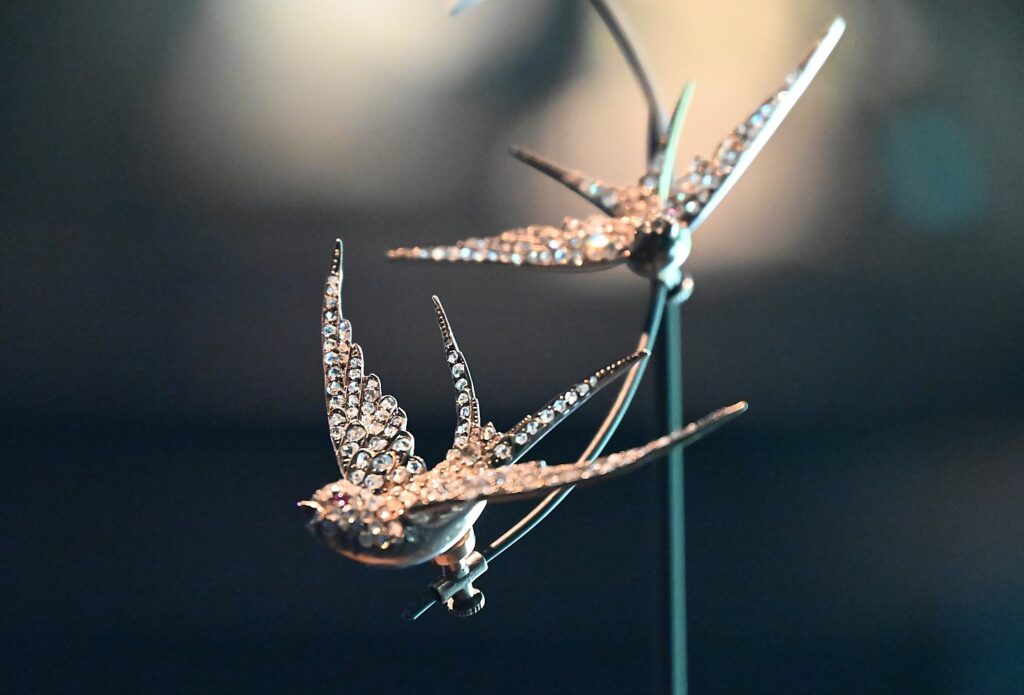
Because the Swiss bought the factory and exclusive rights to the Lalique name, our guide tells us, it was difficult to create a museum with Lalique name, but the museum, funded by the state, the Alsace region and the village, ultimately won.
Everything is produced here in the factory (which we don’t see) – “a timeless collection,” our guide says.
The delightful tour finishes with a marvelous video showing production in today’s factory. There is also a wonderful shop.
Musee Lalique, 40 rue du Hochberg, Wingen-sur-Moder, phone +33 3 88 89 08 14, https://www.musee-lalique.com/en/
La Petite Pierre
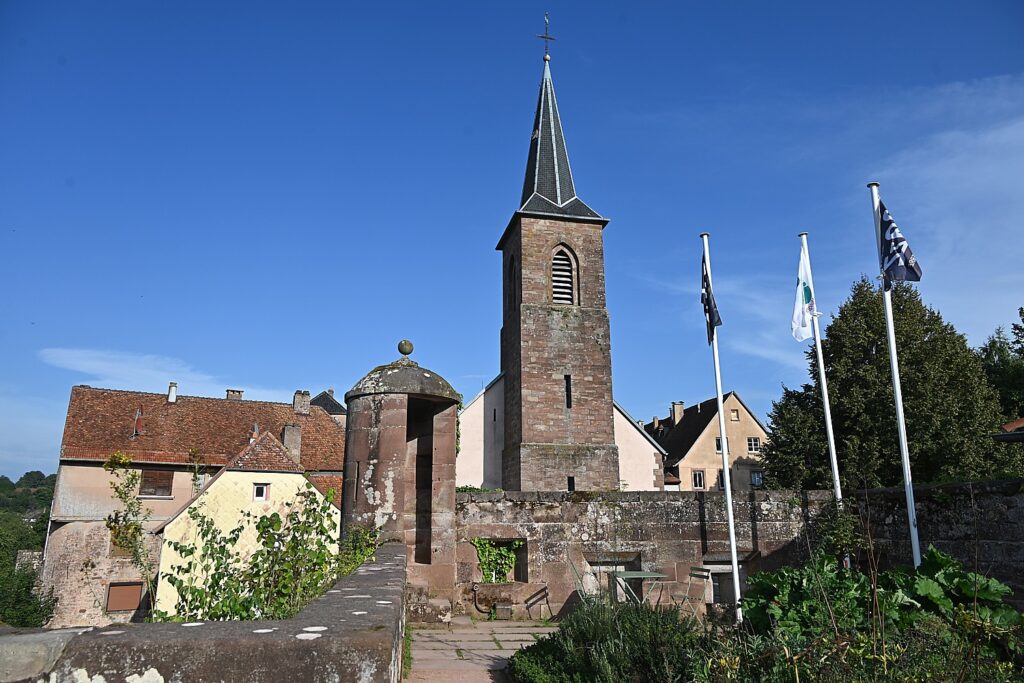
From here, we drive to the hilltop town of La Petite Pierre where there is a 15th century castle. It is late in the afternoon (the setting sun makes for gorgeous colors), and the village looks absolutely vacant, abandoned – almost like a movie set. We walk the ramparts of the castle.

Our drive back to Lutzelbourg takes us passed Wingen-sur-Moder, the World War II battleground where American infantry fought with distinction.

But our adventure is not over – we drive up to the top of a rocky promontory, 322 meters high, that overlooks the Zorn valley, the town of Lutzelbourg, the canal and the Panache to walk among the ruins of the Château du Lutzelbourg. Built by Pierre de Lutzelbourg in the 11th century, the castle was destroyed in 1523; in 1840, the ruins of the castle were to be sold to build the railway but saved from demolition by Adolf Germain, a notary in Phalsbourg. In 1900, the owner at the time, Eugene Koeberle, excavated the ruins. The ruins we visit are more interesting that the intact structures – especially in the late afternoon light. And what a view!
People can hike up a trail (and down) from the town, and I am itching to hike back down to the Panache, but am discouraged because it is too late in the evening.

We are greeted back on board with “French 75,” a cocktail of gin, champagne, lemon juice and sugar syrup (delicious).
Dinner starts with John Dory served like cerviche, with mint and horseradish in a “veil” gelatin with black lemon, Chef Leo shows us the dried black lemon he uses – it comes from Iran where it is dried for month and presents a smokey, lemon flavor. It is sensational.

The entrée is a perfectly prepared lamb with truffle and cauliflower with amazing, rich flavors that burst (monkfish is the option for vegetarians)
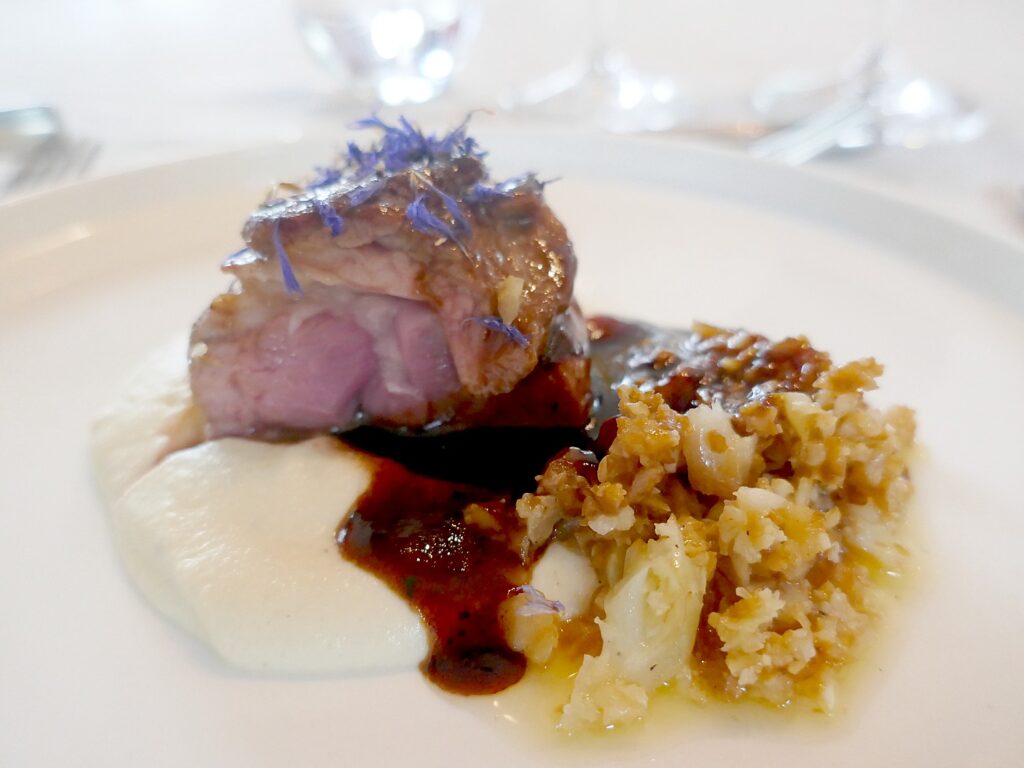
The wines are a Beaune Premier Cru Basion, 2017 Domaine Chanson Chardonnay, and Gasies Margaux 2014 Bordeaux. The cheeses tonight include Tomme de Brebis, a Basque-style cheese half cow, half sheep milk; a Munster from Alsace and Bleu d’Auvergne. The dessert is a phenomenal blueberry tart with white chocolate mousse.
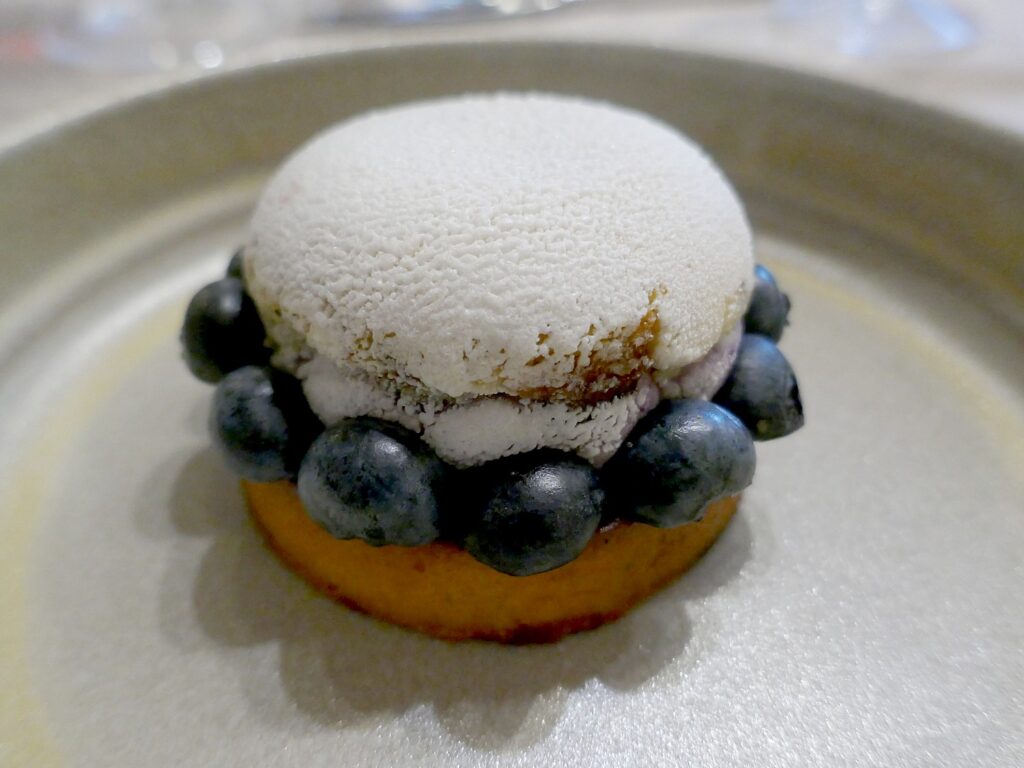
Chef Leo sits down to chat with us after the meal. The 28-year old is spending his first season on the barge hotel. Born in central France, he knew since he was just four years old that the only job he wanted was to be a chef. “My grandma cooked. I loved eating.” He moved when he was 14 to attend catering school. He spent 7 years in Alsace and 2 years in London learning pastry.
“I’ve been in many places, many helpful places.” He likes the freedom of having his own kitchen, doing his own shopping, creating his own recipes. “When I fail, it’s my fault. If I could, I would be 24 hours in the kitchen.”

He says he feeds the crew what the guests eat. “They don’t deserve it,” he jokes. “We have a budget for the crew but I pilfer to feed them the same so they understand what I am serving you.”
His dream (of course) is to have his own restaurant, near Colmar in Alsace.
I tell him his plating is gorgeous. He says his friend is a gallerist. “She helped me with art – color, textures, shapes. Presentation is half of the dish.”
I ask his flavor philosophy. “Really clear and simple – not more than 3-4 items on plate. Popping flavor. I’m always trying new stuff. On the barge, I am free to try. Every week I have new ‘guinea pigs.’ I always try to improve myself in the kitchen. It’s best to learn on my own.”
I think we really lucked out on this European Waterways barge hotel canal cruise.
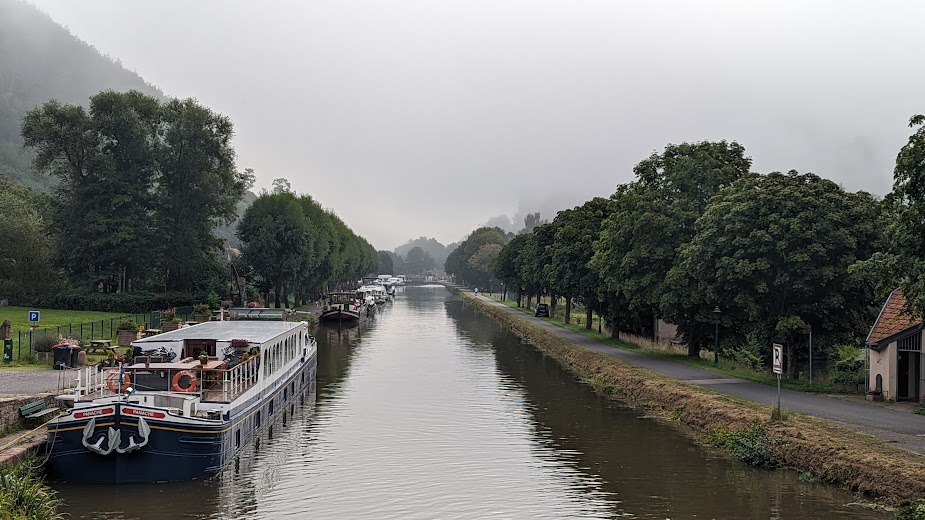
The next morning, we wake to an atmospheric fog, and as the Panache cruises and I cycle away enroute to Niderviller where the cruise will end, we get a last view of the tops of the ruins of Chateau de Lutzelbourg.
European Waterways, 1-877-879-8808, www.europeanwaterways.com.
See also:
EUROPEAN WATERWAYS’ PANACHE HOTEL BARGE CRUISES FRANCE’S ALSACE-LORRAINE CANALS IN LUXURY
Next: A Boat Guillotine, Two Tunnels and a Chagall
_______________________
© 2024 Travel Features Syndicate, a division of Workstyles, Inc. All rights reserved. Visit goingplacesfarandnear.com and travelwritersmagazine.com/TravelFeaturesSyndicate/. Blogging at goingplacesnearandfar.wordpress.com and moralcompasstravel.info. Visit instagram.com/going_places_far_and_near and instagram.com/bigbackpacktraveler/ Send comments or questions to FamTravLtr@aol.com. Tweet @TravelFeatures. ‘Like’ us at facebook.com/NewsPhotoFeatures
